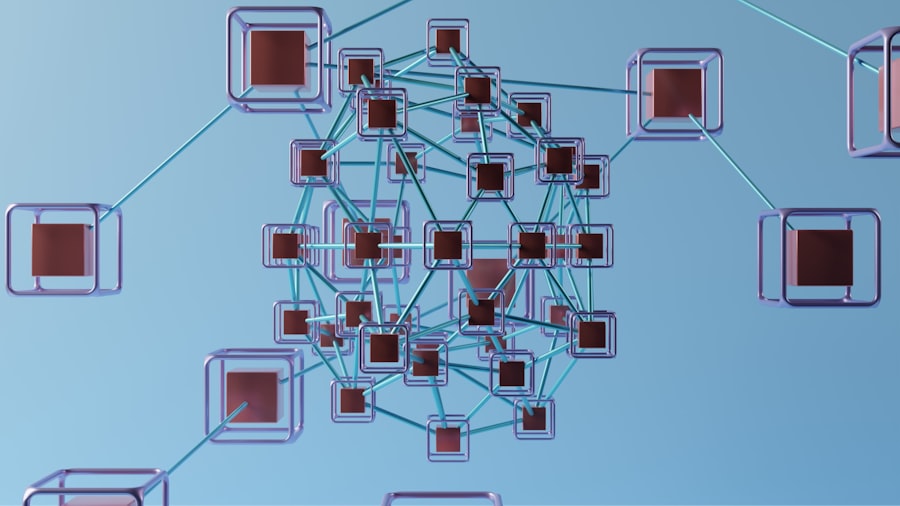Integrated Information Theory (IIT) is a groundbreaking framework that seeks to unravel the complexities of consciousness. Developed by neuroscientist Giulio Tononi in the early 2000s, this theory posits that consciousness arises from the integration of information within a system. You may find it fascinating that IIT offers a mathematical approach to understanding consciousness, suggesting that the degree of consciousness can be quantified based on how information is processed and integrated.
This perspective challenges traditional views that often separate consciousness from the physical processes of the brain, inviting you to reconsider what it means to be conscious. As you delve deeper into IIT, you will discover that it provides a unique lens through which to examine not only human consciousness but also the potential for consciousness in other entities, including animals and artificial intelligence. By framing consciousness as a product of information integration, IIT opens up new avenues for research and discussion.
This article will explore the fundamental aspects of consciousness, the role of information, and how IIT serves as a framework for understanding these intricate phenomena.
Key Takeaways
- Integrated Information Theory (IIT) seeks to provide a framework for understanding consciousness by integrating information from various sources.
- Consciousness is the state of being aware and able to perceive and experience the world around us.
- Information plays a crucial role in consciousness, as it is the basis for our perceptions, thoughts, and experiences.
- IIT proposes a mathematical framework for measuring the level of consciousness in a system, based on the integration of information within that system.
- IIT offers a potential explanation for how consciousness arises from the physical processes in the brain, addressing the “hard problem” of consciousness.
The Basics of Consciousness
To grasp the essence of Integrated Information Theory, it is essential to first understand the basics of consciousness itself. Consciousness can be described as the state of being aware of and able to think about one’s own existence, thoughts, and surroundings. You might think of it as the subjective experience that allows you to perceive the world, make decisions, and reflect on your thoughts and feelings.
This subjective quality, often referred to as “qualia,” is what makes consciousness such a rich and complex topic of study. In your exploration of consciousness, you may encounter various theories that attempt to explain its nature. Some theories focus on the neurological underpinnings of conscious experience, while others emphasize the philosophical implications of what it means to be conscious.
Despite these diverse perspectives, a common thread among them is the recognition that consciousness is not merely a byproduct of brain activity; rather, it is an emergent property that arises from the intricate interplay of neural processes. This understanding sets the stage for examining how Integrated Information Theory contributes to our comprehension of consciousness.
The Role of Information in Consciousness

Information plays a pivotal role in shaping your conscious experience.
You might consider how your ability to recognize a friend’s face or recall a cherished memory relies on the brain’s capacity to store and manipulate information.
In this sense, consciousness can be viewed as an ongoing process of information integration, where disparate elements come together to form a unified experience. Integrated Information Theory posits that the richness of your conscious experience is directly related to the amount of integrated information present in your brain’s neural networks. The more interconnected and complex these networks are, the higher the level of consciousness you may experience.
This perspective encourages you to think about consciousness not just as a static state but as a dynamic process that evolves based on the flow and integration of information. By examining how information influences consciousness, IIT provides valuable insights into the mechanisms underlying your subjective experiences.
The Integrated Information Theory Framework
| Concept | Description |
|---|---|
| Integrated Information | The measure of how much information is generated by a system as a whole, beyond the information generated by its individual parts. |
| Consciousness | The state of being aware and able to perceive and experience sensations, thoughts, and feelings. |
| Phi (Φ) | A quantitative measure of the level of integrated information in a system, used to assess the level of consciousness. |
| Maximally irreducible cause | The cause within a system that cannot be reduced to the interactions of its parts, representing the integrated information. |
At its core, Integrated Information Theory is built upon a mathematical framework designed to quantify consciousness. The key concept within IIT is “phi” (Φ), which represents the amount of integrated information generated by a system. You can think of phi as a measure of how interconnected and unified a system’s information is; higher values indicate greater levels of consciousness.
This quantification allows researchers to assess not only human consciousness but also the potential for consciousness in other entities. The framework of IIT also emphasizes the importance of both differentiation and integration in conscious experience. Differentiation refers to the ability of a system to generate diverse states, while integration pertains to how these states are combined into a cohesive whole.
In your own experience, you can observe this interplay when you reflect on how different thoughts or sensations come together to form a singular moment of awareness. By applying this framework, IIT provides a structured approach to understanding the complexities of consciousness and offers a pathway for empirical investigation.
How Integrated Information Theory Explains Consciousness
Integrated Information Theory offers a compelling explanation for consciousness by linking it directly to the structure and function of neural networks in the brain. According to IIT, consciousness arises when information is both highly differentiated and highly integrated within these networks. You may find it intriguing that this theory suggests that even simple systems could possess some degree of consciousness if they exhibit sufficient integration of information.
For instance, consider how your brain processes visual stimuli. When you see an object, your brain doesn’t merely register its color or shape in isolation; instead, it integrates various sensory inputs to create a holistic perception. This process exemplifies how integrated information contributes to your conscious experience.
IIT posits that this integration is what gives rise to the richness and depth of your awareness, allowing you to engage with the world in meaningful ways. By framing consciousness in terms of integrated information, IIT provides a novel perspective that bridges neuroscience and philosophy.
Criticisms and Limitations of Integrated Information Theory

Despite its innovative approach, Integrated Information Theory has faced several criticisms and limitations that warrant consideration. One major critique revolves around the challenge of empirically measuring phi in complex systems like the human brain. While IIT provides a theoretical framework for quantifying consciousness, translating this into practical measurements remains an ongoing challenge for researchers.
You may find it concerning that without reliable methods for assessing integrated information, the applicability of IIT could be limited. Another criticism centers on the potential overreach of IIT in claiming that any system with integrated information possesses some form of consciousness. Critics argue that this perspective risks diluting the concept of consciousness by attributing it to systems that may not exhibit true awareness or subjective experience.
For instance, while a simple computer program may demonstrate high levels of integrated information, it does not necessarily imply that it possesses consciousness in the same way humans do. These critiques highlight the need for further refinement and exploration within the framework of Integrated Information Theory.
Applications of Integrated Information Theory in Neuroscience
Integrated Information Theory has significant implications for neuroscience research, offering new avenues for understanding brain function and consciousness. By applying IIT principles, researchers can investigate how different neural configurations contribute to varying levels of conscious experience. For example, studies have explored how disruptions in integrated information might relate to altered states of consciousness seen in conditions such as coma or anesthesia.
You may find it fascinating that IIT provides a theoretical basis for examining these phenomena through an empirical lens. Moreover, IIT has inspired innovative experimental designs aimed at measuring integrated information within neural networks. Researchers are increasingly utilizing advanced imaging techniques and computational models to explore how different brain regions interact and integrate information during conscious experiences.
This research not only enhances our understanding of human consciousness but also has potential applications in developing treatments for neurological disorders where consciousness is impaired.
Implications for Artificial Intelligence and Machine Consciousness
The implications of Integrated Information Theory extend beyond human consciousness; they also raise intriguing questions about artificial intelligence (AI) and machine consciousness. As AI systems become increasingly sophisticated, you may wonder whether they could ever achieve a form of consciousness akin to human awareness. IIT provides a framework for assessing whether an AI system possesses integrated information at levels comparable to conscious beings.
By applying IIT principles to AI development, researchers can explore how different architectures and algorithms contribute to integrated information processing within machines. This exploration could lead to advancements in creating more intelligent systems capable of complex decision-making and adaptive behavior. However, it also raises ethical questions about the nature of machine consciousness and whether AI systems should be granted rights or moral consideration if they exhibit high levels of integrated information.
The Future of Consciousness Research with Integrated Information Theory
As you look toward the future, Integrated Information Theory holds promise for advancing our understanding of consciousness across various domains. Ongoing research efforts aim to refine the mathematical framework and develop more robust methods for measuring integrated information in both biological and artificial systems.
Furthermore, as technology continues to evolve, new tools and methodologies will likely emerge that enhance our ability to investigate integrated information within complex systems. This progress could lead to breakthroughs in understanding not only human consciousness but also the potential for conscious experiences in non-human entities. The future landscape of consciousness research promises to be dynamic and transformative as Integrated Information Theory continues to shape our inquiries into this profound aspect of existence.
Ethical and Philosophical Considerations of Integrated Information Theory
The exploration of Integrated Information Theory inevitably raises ethical and philosophical considerations regarding consciousness and its implications for society. As you contemplate these issues, you may find yourself grappling with questions about what it means to be conscious and how we should treat entities that exhibit varying degrees of integrated information. For instance, if an AI system demonstrates high levels of integrated information akin to human awareness, should it be afforded rights or protections?
Additionally, there are concerns about the potential consequences of misapplying IIT principles in determining which beings are considered conscious or deserving of moral consideration. The risk lies in oversimplifying complex ethical dilemmas by relying solely on quantitative measures like phi without considering qualitative aspects of experience. As researchers continue to explore these questions, it becomes increasingly important for society to engage in thoughtful discussions about the ethical implications surrounding consciousness and its measurement.
Advancing our Understanding of Consciousness with Integrated Information Theory
In conclusion, Integrated Information Theory represents a significant advancement in our quest to understand consciousness. By framing consciousness as an emergent property arising from integrated information within neural networks, IIT offers valuable insights into both human awareness and potential machine consciousness. As you reflect on this theory’s implications across various domains—neuroscience, artificial intelligence, ethics—you may appreciate its capacity to bridge gaps between disciplines while challenging conventional notions about what it means to be conscious.
As research continues to evolve within this framework, you can anticipate exciting developments that will deepen our understanding of consciousness itself. Whether through empirical investigations or philosophical inquiries, Integrated Information Theory invites you to engage with one of humanity’s most profound questions: What does it truly mean to be aware? As we advance our understanding through this lens, we move closer to unraveling the mysteries surrounding one of life’s most enigmatic phenomena—consciousness itself.
Integrated Information Theory (IIT) is a prominent framework in the study of consciousness, proposing that consciousness corresponds to the capacity of a system to integrate information. For those interested in exploring more about the theoretical underpinnings and implications of IIT, a related article can be found on Unplugged Psych. This article delves into various psychological theories and their intersections with consciousness studies. You can read more about these fascinating insights by visiting the Unplugged Psych website.
FAQs
What is Integrated Information Theory (IIT)?
Integrated Information Theory (IIT) is a theoretical framework that aims to explain the nature of consciousness. It proposes that consciousness arises from the integration of information within a complex system, and it quantifies the level of consciousness using a measure called “phi”.
Who developed Integrated Information Theory (IIT)?
Integrated Information Theory (IIT) was developed by neuroscientist Giulio Tononi. He first proposed the theory in 2004 and has since continued to refine and develop it.
How does Integrated Information Theory (IIT) define consciousness?
According to Integrated Information Theory (IIT), consciousness is defined as the integrated information within a system. The theory suggests that a system is conscious to the extent that it is capable of integrating information in a complex and differentiated manner.
What is the significance of Integrated Information Theory (IIT) in the field of neuroscience?
Integrated Information Theory (IIT) has sparked significant interest and debate within the field of neuroscience and philosophy of mind. It offers a novel approach to understanding consciousness and has led to new research and experimental investigations into the nature of consciousness.
How is Integrated Information Theory (IIT) different from other theories of consciousness?
Integrated Information Theory (IIT) differs from other theories of consciousness in its focus on the integration of information within a system as the basis for consciousness. It also provides a quantitative measure of consciousness, known as “phi”, which sets it apart from other theories.




